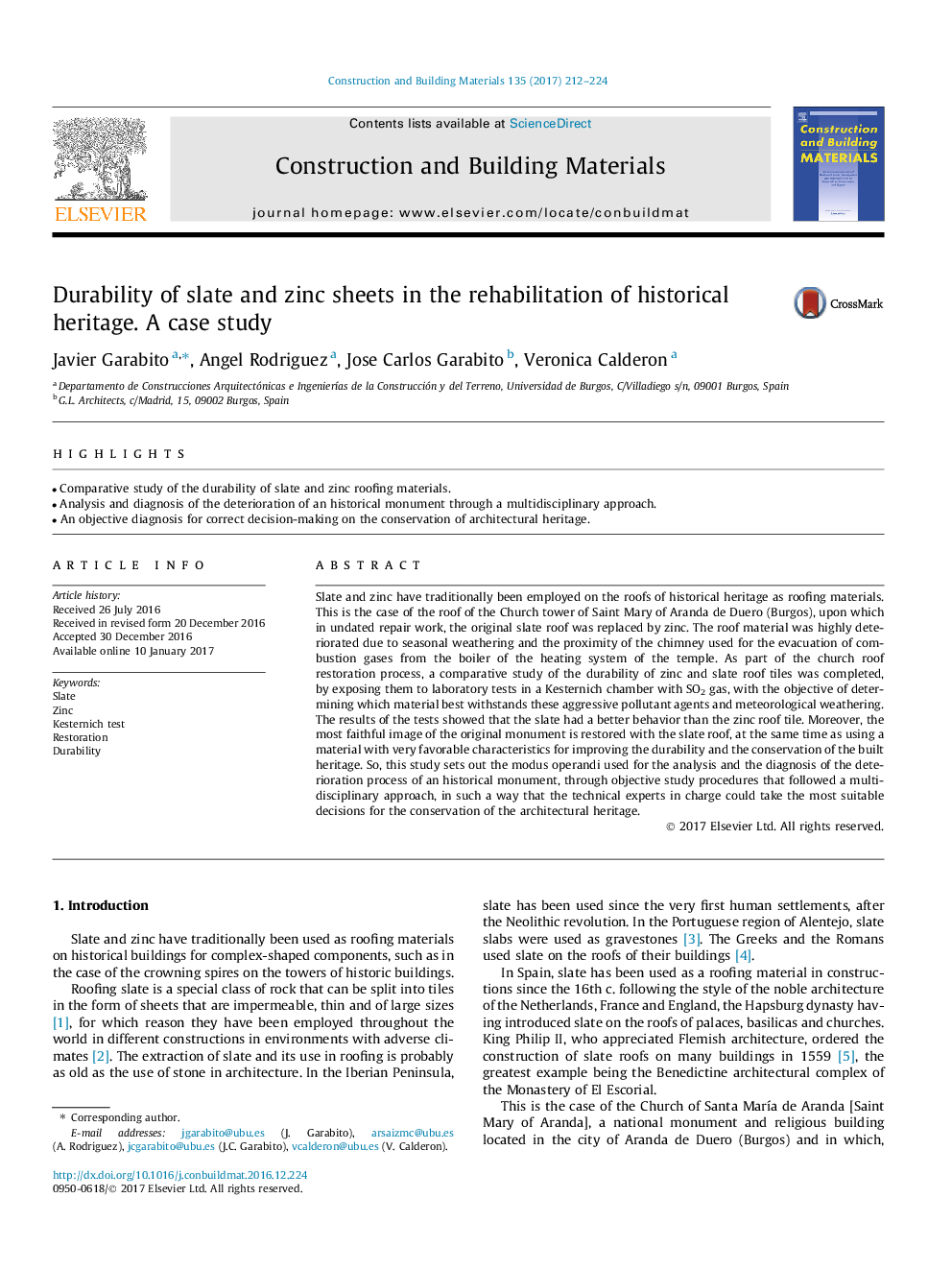| Article ID | Journal | Published Year | Pages | File Type |
|---|---|---|---|---|
| 4913605 | Construction and Building Materials | 2017 | 13 Pages |
Abstract
Slate and zinc have traditionally been employed on the roofs of historical heritage as roofing materials. This is the case of the roof of the Church tower of Saint Mary of Aranda de Duero (Burgos), upon which in undated repair work, the original slate roof was replaced by zinc. The roof material was highly deteriorated due to seasonal weathering and the proximity of the chimney used for the evacuation of combustion gases from the boiler of the heating system of the temple. As part of the church roof restoration process, a comparative study of the durability of zinc and slate roof tiles was completed, by exposing them to laboratory tests in a Kesternich chamber with SO2 gas, with the objective of determining which material best withstands these aggressive pollutant agents and meteorological weathering. The results of the tests showed that the slate had a better behavior than the zinc roof tile. Moreover, the most faithful image of the original monument is restored with the slate roof, at the same time as using a material with very favorable characteristics for improving the durability and the conservation of the built heritage. So, this study sets out the modus operandi used for the analysis and the diagnosis of the deterioration process of an historical monument, through objective study procedures that followed a multidisciplinary approach, in such a way that the technical experts in charge could take the most suitable decisions for the conservation of the architectural heritage.
Keywords
Related Topics
Physical Sciences and Engineering
Engineering
Civil and Structural Engineering
Authors
Javier Garabito, Angel Rodriguez, Jose Carlos Garabito, Veronica Calderon,
